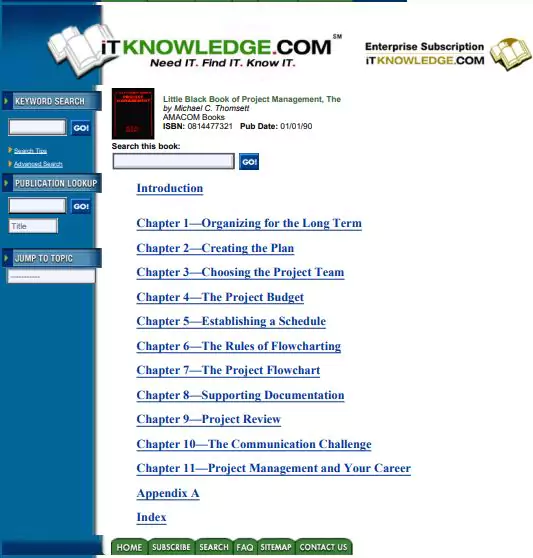‘Blackbook Project On Marketing Strategy’ PDF Quick download link is given at the bottom of this article. You can see the PDF demo, size of the PDF, page numbers, and direct download Free PDF of ‘Tybms Sample Black Book ‘ using the download button.
Black Book Project For Marketing PDF Free Download

Chapter 1 Organizing for the Long Term
That’s a common reaction to being given a project assignment.
Thought of as the corporate version of a root canal, a project is often seen as something to avoid rather than to seek.
But once you discover that the job of organizing and executing a project is not all that difficult, the assignment will take on a different character.
Instead of a difficult, if not impossible, task, it will become an interesting challenge to your organizational skills—perhaps it will serve as an outlet for your creativity or a way to demonstrate your skill—even as an excellent forum for developing your leadership abilities.
The secret is not in learning new skills but in applying the skills you already have but in a new arena.
The project is probably an exception to your normal routine.
You need to operate with an eye to a longer-term deadline than you have in the weekly or monthly cycle you’re more likely to experience in your department.
Of course, some managers operate projects routinely and are accustomed to dealing with a unique set of problems, restrictions, and deadlines in each case.
For example, engineers, contractors, or architects move from one project to another, often involving circumstances never encountered before.
Still, they apply the same organizational skills to each and every job.
That’s their routine.
It’s more likely that you run a department that deals with a series of recurring tasks from one month to another:
The same assignments, procedures, and results occur within the cycle; the same people perform the same routines each time, and you can anticipate problems and deal with them in a very predictable way.
So when you are given an exceptional task—a project—you may be very uncomfortable and find yourself asking:
How do I get started?
Exactly what am I expected to achieve?
Who is responsible for what, and how am I supposed to coordinate the effort?
It’s also likely that you’re used to receiving information from a known source and at a specific time.
You perform your routines—recording, interpreting, reporting, processing—and then convey the end result to someone else.
But on projects, you’ll be working with other departments so the steps involved in receiving, performing, and reporting will probably differ from what you’re used to.
This is a big challenge for someone who is assigned a one-time job (or a series of jobs) that are not part of his or her everyday experience.
And as for all new challenges, the key to staying in control involves the elements of definition, planning, and organization.
Project Definitions
The definition of a project varies from one company to another. In some cases, the word is used loosely to describe any task, exceptional or recurring.
Thus, a “project” could mean any routine that demands time.
In this book, we distinguish between a project and a routine in four ways, as summarized in Figure 1-1.
A project is an exception.
A project involves investigating, compiling, arranging, and reporting information outside the range of usual activities while routine is defined within the range of a department’s function.
Example: A customer service department manager prepares monthly reports identifying
customer contact trends (complaints, inquiries, suggestions) as part of her routine.
When she is given the task of investigating and comparing automated customer service software, she is responsible for a project.
Project activities are related. Routines for recurring tasks performed in your department are related to the activities that define and distinguish that department only, whereas the activities involved in project phases are related to one another and to the desired end result.
So your project may involve coordinating work that not only takes place in your immediate department but extends to actions in other departments, as well as outside resources.
Example: The customer service manager given the project of investigating automated systems may work with the data processing manager, the marketing department, and several suppliers. Collectively, the internal and external information will help her identify the points of comparison.
Project goals and deadlines are specific.
Recurring tasks may be managed with departmental goals in mind, but these goals tend to remain fixed or move forward only with time.
The same is true of deadlines; you may face weekly or monthly deadlines for the completion of reports, processing, and closing.
Projects, though, have singular goals that will be either reached or missed. And projects have clear starting points and completion dates.
Example: The customer service manager is told to compare prices and features of the software, make a recommendation, and complete a report within three months.
This project has a clear goal and deadline.
In comparison, her department’s routine goals and deadlines extend from one month to another.
The desired result is identified.
Routines are aimed not at one outcome but at the maintenance of processes, whereas the research, development of procedures, or construction of systems or buildings on a project produce a tangible, desired result.
| Author | – |
| Language | English |
| No. of Pages | 155 |
| PDF Size | 15 MB |
| Category | Project Report |
| Source/Credits | duhslibrary.ac.in |
Related PDFs
Black Book Project For Marketing Book PDF Free Download
